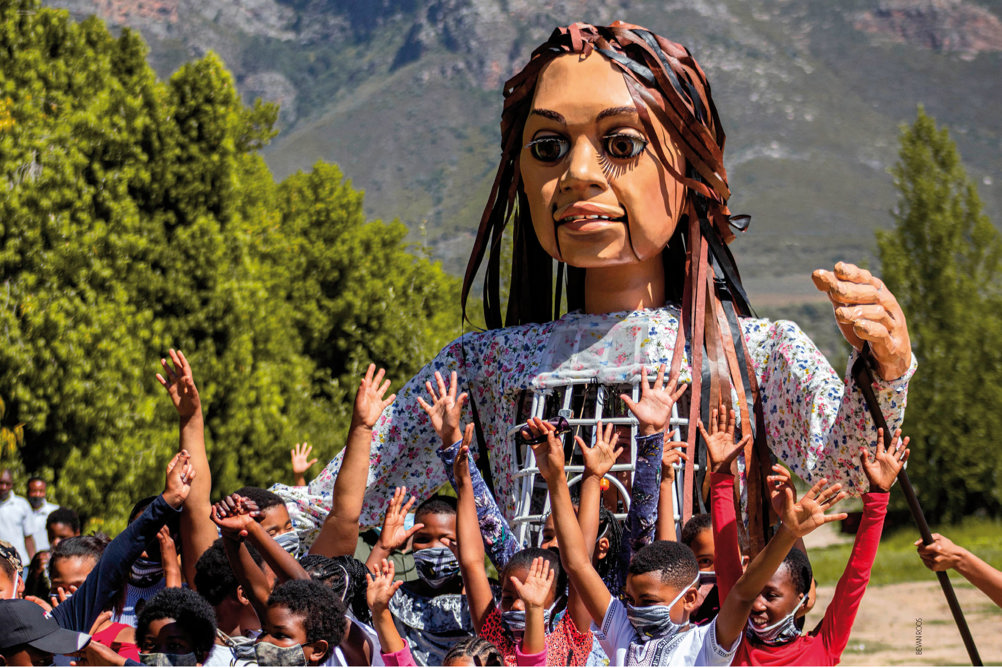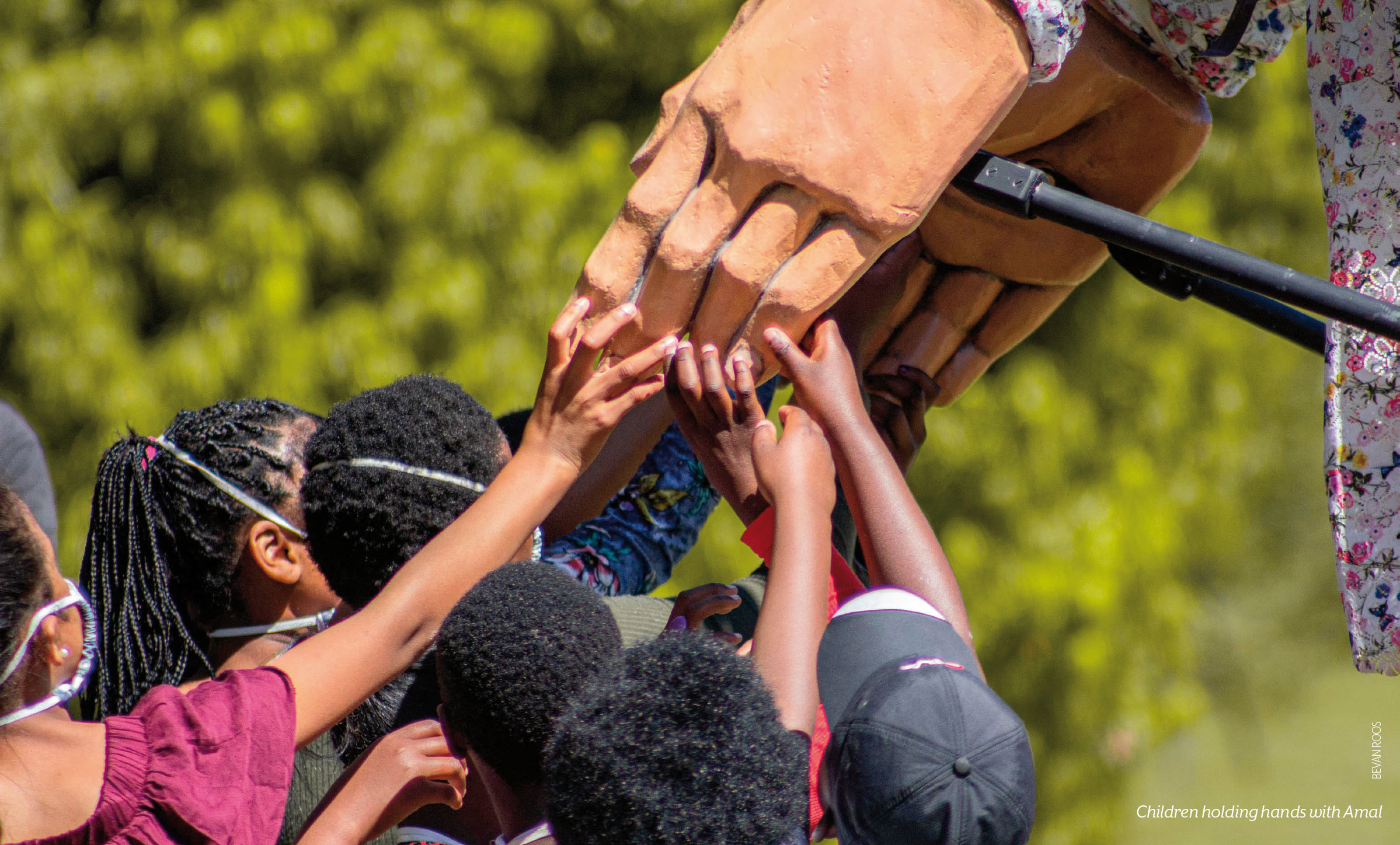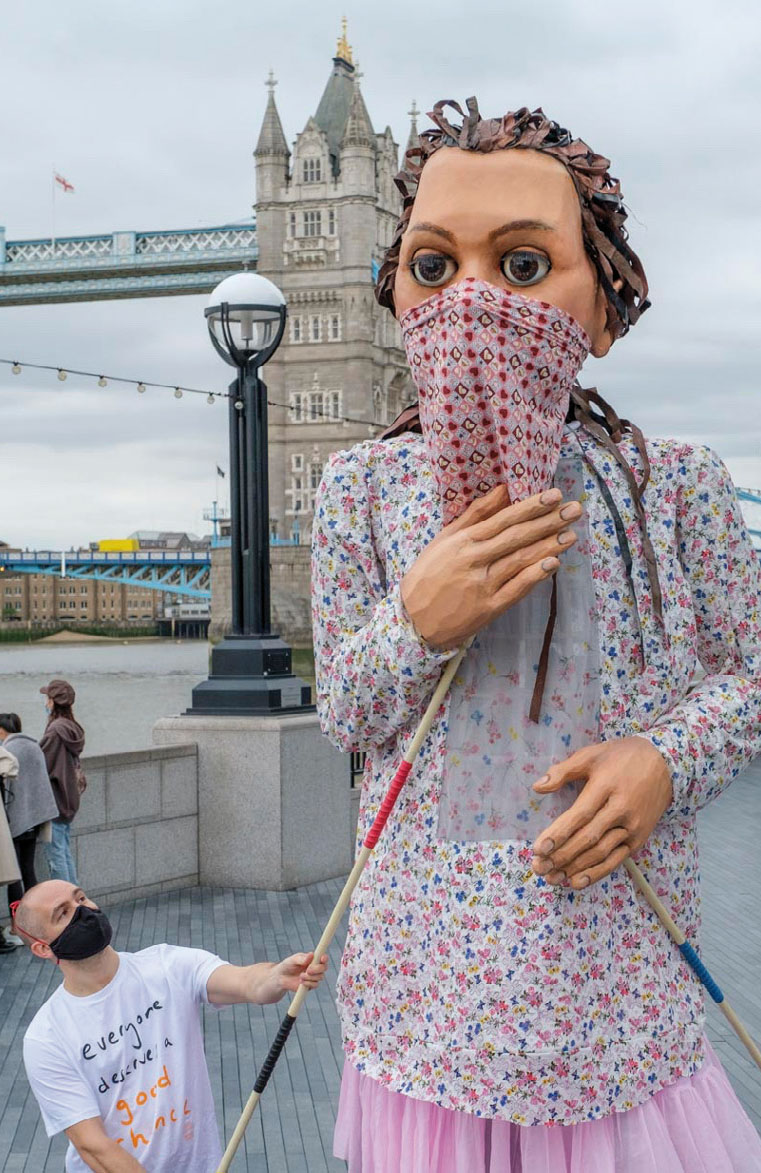
By the time you are reading this article, the adventurous journey of a remarkable little girl will be well under way. The little girl is Amal, and she is remarkable for many reasons – not least because she is a 3.5m tall puppet – but also because she represents the millions of displaced refugee children separated from their families. She is making an 8,000km long journey, starting in Gaziantep on the Syrian-Turkey border, and ending in Manchester, and she'll be making that journey as authentically as any refugee child who might have to travel this route: walking, occasionally riding on a truck, and making some parts of the journey by boat.
Along her way she will be welcomed by over 120 different events, each created by and reflective of the communities she visits. The Walk is an extraordinarily ambitious and beautifully relevant public art project by Good Chance Theatre, in collaboration with Handspring Puppet Company and hundreds of partner organisations. Running alongside it is a dynamic education programme, with opportunities for schools and families to engage in both minor and major ways.
An empathic conversation in the classroom
Little Amal's walk starts in July, and she'll finally arrive in Manchester on 3 November, so the latter half of her epic journey marries nicely with the start of the academic year in Britain. The project education pack provides a comprehensive starting point for powerful work that touches many areas of the curriculum, and for teachers seeking to explore the themes through drama there is a wealth of ideas.
Alice Evans, education producer, is keen to stress that the emphasis of the project is less about what Amal needs from us, and as much about what we can learn from her as we see through her eyes. ‘The aim is to change the conversation around the refugee crisis', she says, ‘and the education pack has been carefully put together, and the themes chosen very carefully, to try to get that compassionate, empathetic conversation going in the classroom’.
The pack does not offer set lesson plans, but rather serves as a springboard for ideas, with exercises and initiators that allow teachers to move forward as they see fit. There is a handy flag system throughout to guide teachers as to areas of exploration that might best fit the particular age-group of their students, and there are six distinct themes, making it easy to navigate and to align with specific lessons.
Exercises for drama students
As I read the education pack, I considered a few drama exercises that I might do to further investigate the issues being tackled.
One of the six themes is Fear. The education pack offers us some thought-provoking materials and exercises to explore Amal's fears, and how she tackles them. It also explores the notion of fear more generally and the fears students might have. The poem ‘I am Brave’ by Laura Mucha is offered as an inspiration for a written exercise, writing a letter or a monologue to Fear. It is aimed at students in the junior and senior age ranges (aged 7-16).
 © Bevan Roos
© Bevan Roos
Children holding hands with Amal
It initially invites students to draw their version of the character, Fear, which is a fantastic opportunity to do some physical drama work. You could have students discuss what a bodily apparition of Fear might look like – how does it move? What does it sound like? Challenge them to work together in small groups to create a living, breathing embodiment of Fear, and take this exercise further by having students take on the role of Amal coming face-to-face with this particular Fear. How does she overcome it? Does she in fact have to?
Devising stimuli
Another theme is Migration, and although the pack features some gentle and fascinating facts about animal migration, it also explores more challenging issues around the refugee experience, and what it means to belong, or feel like an outsider. Some hard-hitting words from a poem by Warshan Shire (‘No-one leaves home unless home is the mouth of a shark’) are offered as an initiator for work with senior students (aged 11–16) around how it might feel to be forced to leave home.
Teachers seeking to include drama within this theme have excellent material from which to instigate devising work. You could challenge students to devise and rehearse scenes that explore the difficulty of deciding to leave home, the factors that might delay or expedite that decision, and what feelings might come up at each stage of that process. Presenting the work to peers and engaging in group discourse around the ideas afterwards will offer opportunities to further deepen the classroom discussion.
 © Bevan Roos
© Bevan Roos
Educational opportunities
The possibilities to engage with The Walk at an educational level do not stop at the education pack. Alice has been running CPD zoom sessions on the project, and there is a sign-up form for those interested in these on the website. She is also working on a buddy system for schools who may wish to create their own events around welcoming Amal, offering opportunities for collaboration locally.
At its heart, The Walk is an educational project. Amal learns as she progresses on her journey, and as she learns, we can learn too. It offers an exceptional opportunity for pupils to engage in conversations that are important, relevant, and empowering for young people, and which can connect youth voices internationally. I hope the education pack is only the beginning of your pupils joining Amal on her adventurous, inspirational journey.
The educational resources and further information about The Walk can be found at www.walkwithamal.org
Find further inspiration to use poetry in teaching about migration and refugees, in this issue's Drama Strategy.
